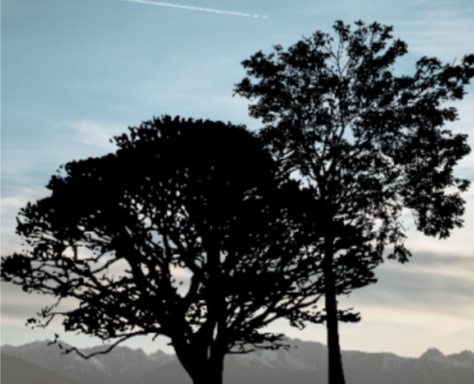The Ginkgo biloba tree is known for its long lifespan, as it is the oldest recorded tree found in China. It can reach up to 3,500 years old with the species being unchanged for the past 250 million years.
In order to study the Ginkgo biloba’s aging and the unique characteristics that contribute to their longevity, researchers have looked at their metabolic, cellular, physical and genetic properties known to influence the rate of aging.
Researchers in China were the first to look at the mechanisms of aging in the Ginkgo biloba. They first looked at its physical properties including ring width, basal area increment (diameter of the tree), and physiological properties of the leaves, seeds and stems. Researchers have found that the increment of ring width typically decreases with age in plants. In the Gingko biloba, the basal area increment was found to be maintained in older trees compared to middle-aged trees. The leaf and seed physiologies seemed to be preserved between all age groups. Phytohormones (aka plant hormones) signaling was found to be preserved in older trees as well. These findings suggest that older trees have maintained the functionality found in middle-aged trees.
To further investigate the longevity of these trees’ transcriptomic analyses (analyzing complete RNA transcripts) were done to measure gene expression (if genes will encode for specific essential proteins). Ribonucleic acid (RNA) sequencing looks at genes that are involved in plant development and aging. Aging plants’ gene expression typically decreases with age. In the Gingko biloba, it was found that there was no difference in gene expression for genes contributing to autophagy (destruction of damaged cell components). MiRNAs (RNAs that help regulate gene expression) that contribute to cell growth and aging were still expressed with old age, when, typically, miRNA levels decrease with age. These results conclude that gene expression and transcriptional programs (mechanisms that assist in DNA converting to RNA) are preserved in old-aged Ginkgo biloba trees with slight variation with age.
These combined results suggest that gene expression, cellular pathways relating to plant aging and transcriptional programs contribute to the longevity of the Ginkgo biloba trees. Knowing about these mechanisms allows for a larger range of research into other organisms that have a higher-than-expected lifespan.
Researchers universally have already found a way for humans to utilize anti-aging benefits from the Ginkgo biloba. Anti-aging benefits can vary from appearance such as reducing wrinkles, physiological benefits such as reducing pain and inflammation and even psychological benefits such as reducing depression and improving memory. Crushing up the stems and leaves of the tree and making it into an extract allows for human consumption in liquid, powder and capsule form that can be readily available at most pharmacies and some online stores. While it is important to note that the consumption of Ginkgo biloba products hasn’t been approved by the FDA or has any medically proven health benefits, many companies who produce the product claim it provides a wide variety of positive health outcomes. These include anti-inflammation, improved blood circulation, reduced symptoms in psychiatric and dementia patients, reduced anxiety and depression, improved brain function, as well as many more health benefits.














































